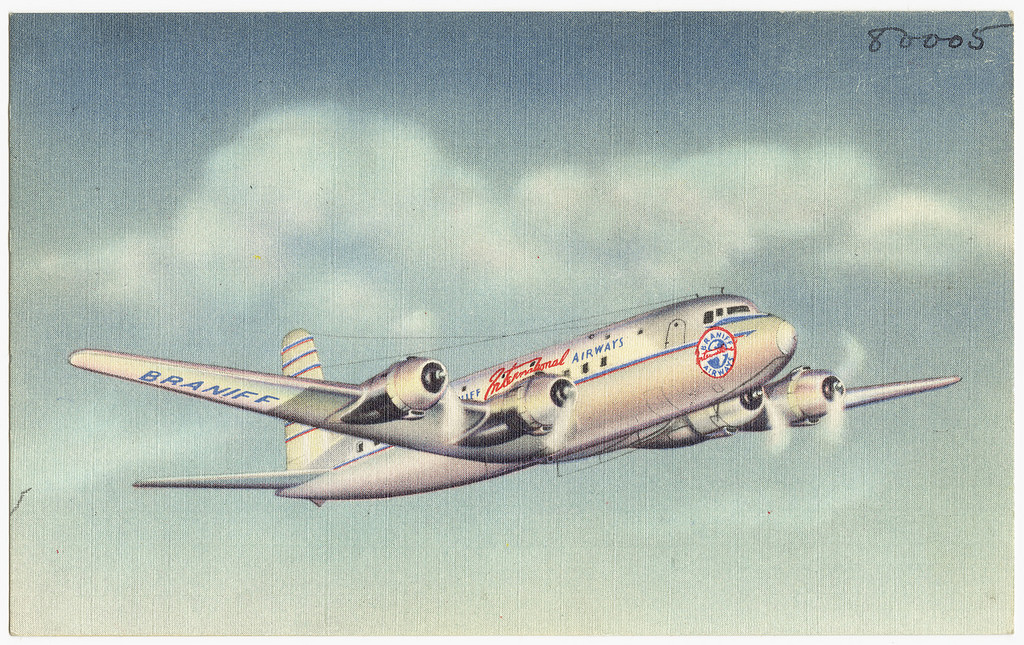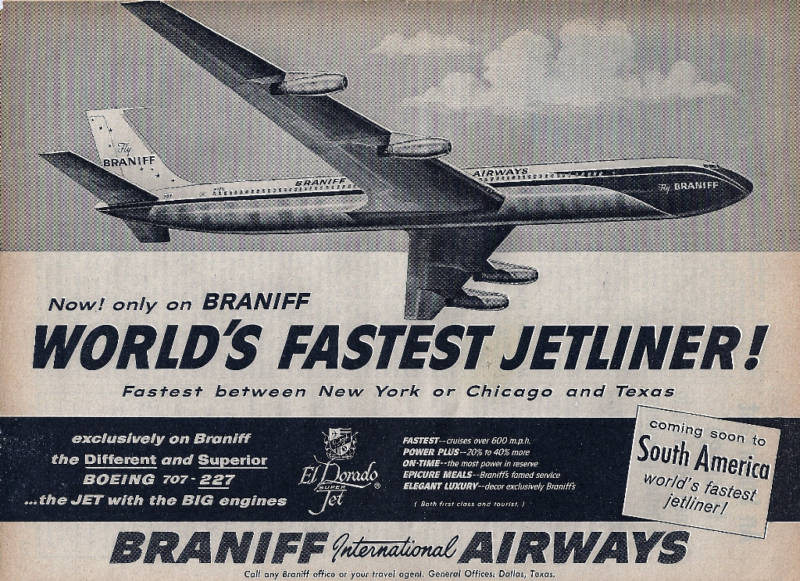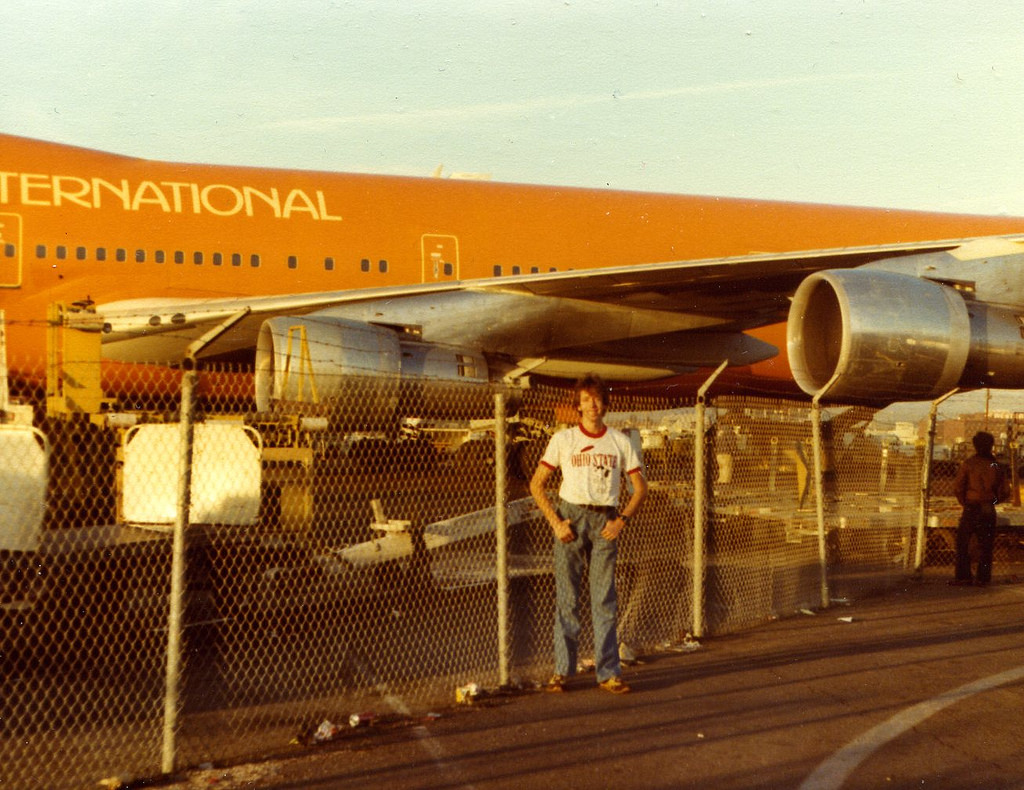

Today Senior Contributor R.D. Sussmann-Dewberry returns with a stellar three part series on the history of Braniff International. He has previously written fantastic pieces about the modern rise of Delta, the new American Airlines, the History of Low Cost Carriers, United Airlines, the History of Air Shuttles, The Middle East 3, Alaska’s purchase of Virgin America, United’s Polaris and Slim Line Seats. He has been involved with the airline industry for over 20 years and is an active travel consultant and airline analyst. R.D. is also a huge #Avgeek, a theme park enthusiast and a friend.
Navigation:
- Part I: Braniff – from Stinsons to Flying Colors
- Part II: Braniff – Ultra Colors, ultra problems.
- Part III: Braniff – Those who do not learn from the past are doomed to repeat it
Intro
In my history of aviation, dating as far back as 1977, there is one entrant that stands out as being remarkable to this day: Braniff International. While I never got to experience this colorful carrier, it has always been a focus of my history & my study of the airline industry. What follows is a history of the carrier in three parts, and a look as to what brought down the carrier, despite the financial success of most of its history.
Part I: Braniff – from Stinsons to Flying Colors
Braniff’s roots begin with a small operation in the Central Midwest – namely, Oklahoma & Kansas, where Paul & Tom Braniff operated a small feederline starting in 1928. This short feederline carrier was absorbed by Universal Aviation in 1929, and the Brothers Braniff moved their sights a bit further south, to Dallas & Ft. Worth Texas. Operating a starter route between Dallas, Wichita Falls & Oklahoma City, Braniff Airways expanded into new markets throughout the central heartland of the United States, spreading northward towards Minneapolis/St. Paul, and south to the border.
Along with Tom Braniff, Charles Beard took some element of control and would continue to grow the carrier through several mergers & route expansions, including access to South America & Mexico. In 1954, Tom Braniff died, ending the Braniff family lineage in the carrier. Charles Beard took the full helm of the carrier, and continued to nurture the carrier forward.


The 1950s brought Braniff into the start of the Jet Age. Very rare Boeing 707-227s, a more powerful variant of the 707 jetliner were ordered for use on their longer legs which now reached coast to coast. An attention to service (a hallmark of Braniff’s legacy) brought the introduction of El Dorado Super Jets to South America later on. Lockheed Electra Turboprops filled in where the jets couldn’t go, and Braniff was a modestly profitable company, though unknown in many regions as they simply didn’t go there. To cause further issues, Beard’s conservative image for the carrier combined with slow growth brought in changes in the structure of the carrier – ones that would be far reaching in every way.
The Great America corporation purchased control of Braniff in 1964. C. Edward Acker would go through the carrier, and began to seek better alternatives. By the end of the year, Harding Lawrence of Continental Airlines would take the reins, and Beard was oustered from the board, leaving the carrier he helped grow.
The End of the Plain Plane
Lawrence quickly set to work on Braniff. The airline had been proactive in ordering short-haul jets, namely the British Aircraft Corporation 1-11, as well as ordering the 727-100… but Lawrence saw a sleeping giant in Dallas. Calling in the marketing team from Tinker & Associates, he met Mary Wells, an advertising designer with whom many companies trusted their image. She took over the marketing side of the carrier, and prepared to alter the image of Braniff: A stout, small regional carrier with South American routes into a much bolder, brighter carrier. And her methods were not like anybody had seen in the industry anywhere.
Emilio Pucci decorated the Hostesses (Flight Attendants now), Alexander Girard did the visual ‘look’ of the airline, and Mary Wells handled the paint. In the end, Braniff International rolled out seven different color schemes – all from a very 1960’s pallette – ranging from Signal Orange to Ochre, to Grass Green to Electric Blue. Combine this with a massive advertising blitz rolling out the End of the Plain Plane, and news coverage followed… followed by the passengers.
Braniff’s new look was not only popular, it was Haute Coture. Loads surged, profits blistered, and Braniff was starting to shine and outgrow its older, more staid image. Additional routes were added through the blessings of the Civil Aeronautics Board, including routes to Hawaii, Florida & beyond. 1967 brought the merger with PANAGRA, a primarily South American based carrier, and Braniff’s planes were seen all over the Americas, in ever-growing numbers.
Into the 1970’s
By 1970, the industry was changing rapidly. Braniff’s new look began to look a bit faded in light of new color schemes by other carriers. And the industry was at a major junction: The 747, Lockheed L1011 & McDonnell Douglas DC-10 were coming, and while the other major carriers were busy ordering large fleets of these jets, Lawrence ordered only two 747s, of which only one was discovered. But it was remarkable in so many ways: The entire plane was bright orange. “The Great Pumpkin” or “The Big Orange” flew a single route for Braniff – their hallmark Dallas-Honolulu run for most of its career.


The early 1970s meant two things in the industry: Steep recession, leading to financial distress at many carriers – and strong, steady profits at Braniff. The reason was clear: Braniff’s route network, though suited for the DC-10 & L1011, were better optimized by smaller (And far less expensive) 727 jets. While other carriers were cutting frequency, replacing them with a single widebody jet, Braniff was adding frequency and high-yield business passengers at the same time. Airlines had a hard time competing in Tornado Alley – from Minneapolis to Dallas – where Braniff’s strong, frequent schedule allowed passengers many choices. Their low debt structure allowed higher profits, and the image generated traffic.
In 1972, Braniff rolled out their next set of colors – a bit muted from the original End Of the Plain Plane image – but just as vibrant & colorful. The Flying Colors image introduced four color schemes fleet wide, and again refreshed their branding & image. Braniff’s brightly colored planes could be seen everywhere coast to coast, and the name traded highly as a result. The Braniff name would soon grace the world’s largest (and fastest) piece of art – a DC-8 painted by Alexander Calder. “Flying Colors of South America” debuted and was soon seen throughout the South American route system, as well as occasional forays into the domestic network. In 1976, a 727-200 would join her brother as Flying Colors of the United States, in time for the Bicentennial of the USA. Braniff was flying high.


What made the 1970s good for Braniff was a mix of image, fleet, routes & service. Having a primary fleet of 727 aircraft for domestic service kept things simple & flowing, and made plane change outs easy if there were issues. Having the DC-8 for South America allowed for simplicity of operations south of Miami. These moves kept costs lower, even as fuel began to rise in light of the Oil Crisis of 1973. Offering a superior service and schedule kept planes full of high-yield traffic. And having a well developed & tight system of routes meant operations were kept flowing constantly, despite being in a region known for some of the worst weather in the country. Braniff’s constant attention to these aspects is a credit to the incredible employees.
As 1976 rolled on, it was decided to update the look again of Braniff. From the top to the bottom, Harper & George were brought in to overhaul Braniff for the end of the decade. At the same time, Alfred E. Kahn and the Civil Aeronautics Board had a plan to overhaul the entire airline industry from the air down…
Navigation:
- Part I: Braniff – from Stinsons to Flying Colors
- Part II: Braniff – Ultra Colors, ultra problems.
- Part III: Braniff – Those who do not learn from the past are doomed to repeat it
Increased Offer! - Chase Sapphire Preferred® Card 75K!


Learn more about this card and its features!
Opinions, reviews, analyses & recommendations are the author’s alone, and have not been reviewed, endorsed or approved by any of these entities.



[…] Part I: Braniff – from Stinsons to Flying Colors […]